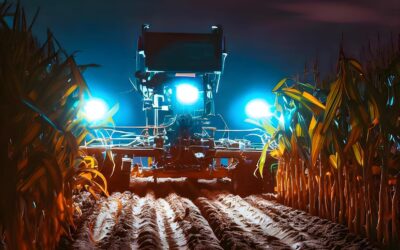Plural ➝ ROS
- An open-source middleware framework used for developing software to control robots. It provides a set of libraries and tools that simplify the development of robotic applications.
Synonyms
ROS 2 – Robot Middleware – Robotic Framework
Antonyms
Proprietary Robotics Software – Closed-Source Robot Control
Etymology (Origin and History)
ROS was originally developed in 2007 at Willow Garage, a robotics research lab, as a collaborative project.
It was released to the public in 2009 as an open-source framework.
The term “Robot Operating System” reflects its purpose as a software platform for robot control, rather than a traditional operating system.
Despite its name, ROS does not replace the operating system on a robot but runs on top of it.
Pronunciation
arr-oh-ess
Related and Derivative Terms
- ROS 2: A newer version of ROS with enhanced features and real-time capabilities.
- ROS Nodes: Individual software modules in a ROS system that perform specific tasks.
- ROS Packages: Collections of related ROS nodes, libraries, and configuration files.
- ROS Master: The central coordination point in a ROS system.
- ROS Kinetic, Melodic, etc.: Different releases of ROS with specific codenames, each with its own improvements and features.
Quotations and Historical References
“ROS has revolutionized the field of robotics by providing a flexible and standardized platform for robot software development.”
Sebastian Thrun, founder of Google’s self-driving car project (Waymo)
“The adoption of ROS in academia and industry has led to a rapid advancement in the capabilities of robotic systems.”
Helen Greiner, co-founder of iRobot and CyPhy Works.
“With ROS 2, the ROS community has addressed many limitations of the original ROS, making it more suitable for real-time and commercial robotic applications.”
Brian Gerkey, former CEO of Open Robotics
Fields of Application
ROS is used in various fields, including:
- Industrial Automation
- Autonomous Vehicles
- Medical Robotics
- Drone Technology
- Research Robotics
- Space Exploration
Example Sentences
- Engineers use ROS to develop software for autonomous drones.
- ROS is a popular choice for controlling robot arms in manufacturing.
- The research team implemented a custom algorithm in ROS to improve robot navigation.
Curiosities
- Despite being called a “Robot Operating System,” ROS is not an operating system like Windows or Linux but rather a middleware framework that runs on top of an actual operating system.
- ROS has made its way beyond Earth. NASA‘s Robotic Operating System (ROS) for use in space robotics and autonomous systems is built upon the open-source ROS framework. Robots like the Mars rovers have benefited from ROS-based software.
References
- ROS Wiki
- “Programming Robots with ROS” by Morgan Quigley, Brian Gerkey, and William D. Smart.
Analogies
ROS is to robots what an operating system is to a computer. It provides the essential software infrastructure for robots to perform tasks and communicate.
Frequently Asked Questions
Is ROS an actual operating system?
No, ROS is not an operating system but a software framework that runs on top of an operating system.
What are ROS Nodes?
ROS Nodes are individual software modules within a ROS system that perform specific tasks.
What is ROS 2?
ROS 2 is an updated version of ROS with improved features, including real-time capabilities.
Where is ROS commonly used?
ROS is used in various fields, including industrial automation, autonomous vehicles, medical robotics, and research robotics.
What is the purpose of ROS?
ROS is designed to make it easier for developers to create complex robot applications by providing a collection of libraries and tools that handle common tasks like hardware abstraction, message passing, and visualization.
What programming languages can be used with ROS?
ROS supports several programming languages, including C++, Python, and Java.
Is ROS difficult to learn?
While ROS can be challenging to learn, there are many resources available online to help developers get started, including tutorials, documentation, and user forums.



